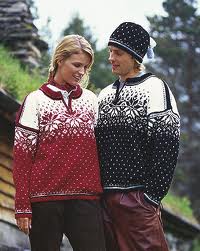Brand Is In The Eye Of The Beholder

Ironic or goofy?
The students in my branding class just reminded of one of the basic axioms of branding: It doesn’t matter what you think. It only matters what your target market thinks.
To demonstrate the impact of brands, I posted six picture of myself in shirts with different logos. I minimized other variables – using the same pose, the same background, the same facial expression, etc. All the shirts, save one, were “polo” style. The idea was to isolate the logos and their respective brands. I then asked the students what they thought of each version of me. Was one was more friendly than others? Was one more stuck up? Was one richer? Another poorer?”
As an afterthought, I tossed in a picture of me wearing a (non-polo) shirt with a dachshund logo (pictured). I bought the shirt on a whim because we have a dachshund (pictured here) and I like the breed. I thought my friends (my target market) would enjoy the (inside) joke.
Well, my students let me know that what they beheld was a lot different than what I beheld. I thought the shirt was cool in an ironic kind of way. They thought it was gaudy and generally inappropriate. (I guess I’m too old to be ironic). One student wrote, “I perceived that one to be more “stuck up” and rich. … plaid button-down shirts are often worn by wealthy Hamptons residents, it screams yacht club, country club to me.” Another student, wrote, “The shirt is crazy bright with pink and purple so he will stand out in a crowd. I barely notice the logo because the shirt screams I am here.” Yet another wrote, “As for the plaid… I’m biased against plaid. I think it looks goofy.”
So, I thought I looked cool but others saw me as stuck-up, rich, self-centered, and goofy. Yikes!
All of which brings me to Miley Cyrus and her recent re-branding at the Video Music Awards (VMA) ceremony. I’ve read a lot of hand-wringing articles about Miley’s twerking. Unfortunately, none of those articles were written by members of Miley’s target audience. In terms of branding, it doesn’t matter much what the parents of Miley’s fans think. In fact, horrifying the parents may be the simplest way to win the hearts and minds of the kids. Miley’s saying, in effect, “We’re in this together. They don’t understand.” That’s a message that always resonates with teens. It’s one of the reasons I liked the Rolling Stones as a kid. My parents thought the Dave Clark Five were just fine but that the Stones “went too far”. Message to me: cue the Stones.
What’s the message here? First, identify your target market. Second, understand exactly what your target market thinks, what they believe, and what they value. Third, ignore anyone who is not in the target market. It doesn’t matter what they think. Fourth, that includes you. You are not the target market. Forget yourself. Brand is in the eye of the beholder.
Branding: Why Do They Buy?
When I lived in Stockholm, I was responsible for customers throughout Scandinavia. One of my favorite customers was Dale of Norway, the creators of richly patterned, thick wool sweaters. The sweaters are very popular with winter sport enthusiasts in my home state of Colorado. They’re stylish and they’re practical … and therein lies a tale.
I visited Dale of Norway’s headquarters and met their CEO. The company is located in a picturesque little town called Dale. (We call it Dale as in Chip and Dale but the Norwegians pronounce it Darla). When I met the CEO I mentioned that I was from Colorado and that my wife and I were both customers. The conversation went something like this:
CEO: “Let me guess. You have one sweater and your wife has three.”
Me (surprised): “Yes. How did you know?”
CEO: “Women see our sweaters as fashion statements and they’re willing to buy more than one. Men see them as a high quality product that will last a life time. If it will last a life time, why would you ever buy more than one?”
Me: “I wish I understood my customers as well as you understand yours.”
There are a couple of lessons here. First, sometimes a satisfied customer is just that: satisfied. I was a very satisfied Dale of Norway customer. If you did a customer satisfaction survey, I would be right at the top. But I was generating exactly zero revenue for the company.
One of Dale of Norway’s challenges was to overcome the satisfied customer curse. They needed to give me (and even my wife) more reasons to buy. To complement their heavy weight sweaters, they introduced two new product lines — mid-weight sweaters and lighter weight accessories. I’m now the proud owner of a mid-weight sweater and some long underwear. I’m still satisfied but, more importantly, I’ve generated new revenues for Dale of Norway.
The second lesson: different people buy for different reasons. Don’t ever assume that what’s sauce for the goose is sauce for the gander. To the maximum extent possible, live with your customers. When you see the world through their eyes, you’ll find that different groups see your product differently. There’s nothing surprising in that — it’s just segment marketing. Unless you understand how each segment thinks, you’ll never communicate effectively with them. One message does not fit all.
The third lesson? Dale of Norway makes great sweaters, gloves, mittens, and scarves. So get out there and buy one … or two … or three. You can find them here.

